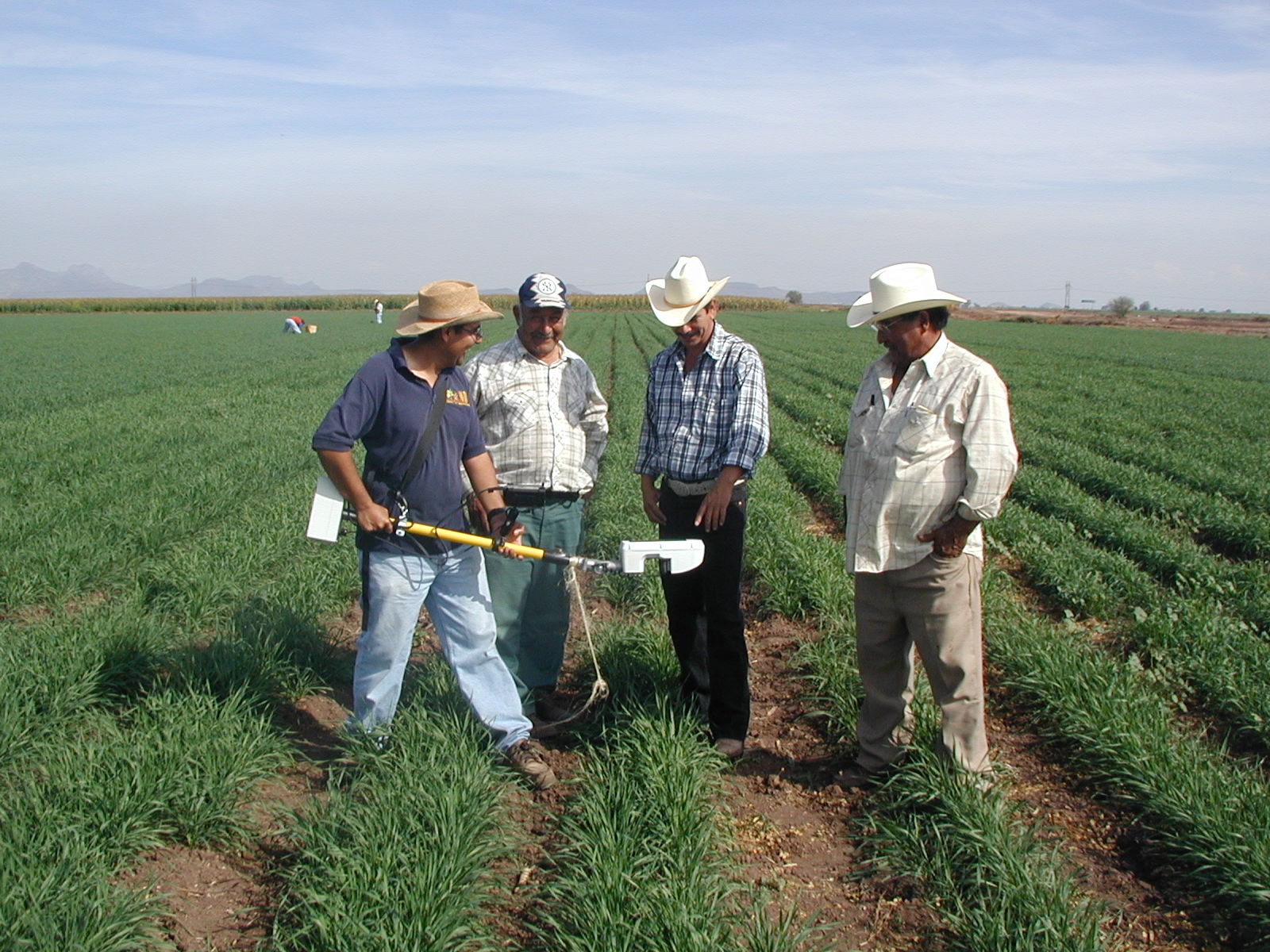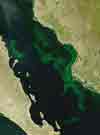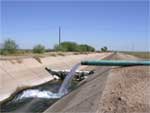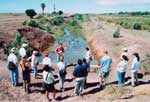|
|
News
-
Wheat farmers see infrared
Infrared sensors help better target fertilizer for wheat on large commercial farms in northern Mexico, cutting production costs and reducing nitrogen run-off into coastal areas. CIMMYT July 2007 newsletter.
-
Farmers discuss
nitrogen sensor technology
This spring the Asociacion
de Organismos Agricolas del Sur de Sonora (AOASS), the umbrella
institution for farmers unions, organized a meeting to discuss
the results of this season's trials of nitrogen sensor technology.
CIMMYT June 2006 report.
-
Of Wheat and Weather
October
2005 CIMMYT newsletter reports on a new study from the Carnegie
Institute of Washington, Stanford University, and CIMMYT that
shows wheat yield gains in northern Mexico could be due mostly
to the weather. The study
was published in Field Crops Research.
-
Wheat and Water
win
 CIMMYT,
under the direction of Yaqui Principal Investigator IvanOrtiz-Monasterio,
shows technology to enhance farmer income and reduce ocean pollution
in May 2005 CIMMYT
report. CIMMYT,
under the direction of Yaqui Principal Investigator IvanOrtiz-Monasterio,
shows technology to enhance farmer income and reduce ocean pollution
in May 2005 CIMMYT
report.
-
Ocean ecosystems
plagued by agricultural runoff
March 10, 2005 article
in the Stanford Report reports that Yaqui Valley researchers
from CESP used satellite imagery to demonstrate how agricultural
runoff fuels algal blooms in vulnerable areas of the ocean.
-
Field Laboratory
Identifies Ways to Reduce Environmental Impacts of Intensive
Agriculture
 CIMMYT
report
released May 2004 from Yaqui Principal Investigator, Ivan Ortiz-Monasterio
looks at how remote sensing is being used to make thousands
of observations across the Valley to determine how different
sowing dates affect wheat yields. Remote sensing is also being
used for tracking nitrogen derivatives that are released into
the atmosphere or leached into the soil with irrigation water. CIMMYT
report
released May 2004 from Yaqui Principal Investigator, Ivan Ortiz-Monasterio
looks at how remote sensing is being used to make thousands
of observations across the Valley to determine how different
sowing dates affect wheat yields. Remote sensing is also being
used for tracking nitrogen derivatives that are released into
the atmosphere or leached into the soil with irrigation water.
-
 Drought
enters ninth year in birthplace of the Green Revolution Drought
enters ninth year in birthplace of the Green Revolution
Stanford Yaqui researchers,
David Lobell and Gregory Asner, recently published the paper
'Climate
and Management Contributions to Recent Trends in U.S. Agricultural
Yields' in the February 14, 2003 issue of Science
magazine. Lobell and Asner are currently working in the Yaqui
Valley on integrating the remote estimates of NPP with a biogeochemical
model (Terraflux) to simulate regional carbon fluxes. They are
continuing to work on management applications of the remote
sensing wheat yield estimates through management decision models
and surveys. For more information on this research project click
here.
-
Yaqui Valley
Conference, Sonora, Mexico - October 16-18, 2002
 Twenty-five
Stanford Universtiy and Mexican researchers gathered in Sonora,
Mexico for the fourth annual Yaqui
Valley Conference held October 16-18, 2002 to discuss the
past present and future conditions of agriculture and aquaculture
development in the Yaqui Valley Twenty-five
Stanford Universtiy and Mexican researchers gathered in Sonora,
Mexico for the fourth annual Yaqui
Valley Conference held October 16-18, 2002 to discuss the
past present and future conditions of agriculture and aquaculture
development in the Yaqui Valley
-
Saving Ecosystems
Through Satellite Imagery
CIMMYT,
with the assistance of Stanford Yaqui collaborators, are using
satellite images to help researchers understand the ecology
of intensive farming systems in Mexico. Their findings could
have implications for similar systems in South Asia. Click
here
for further information
|
| |
|


